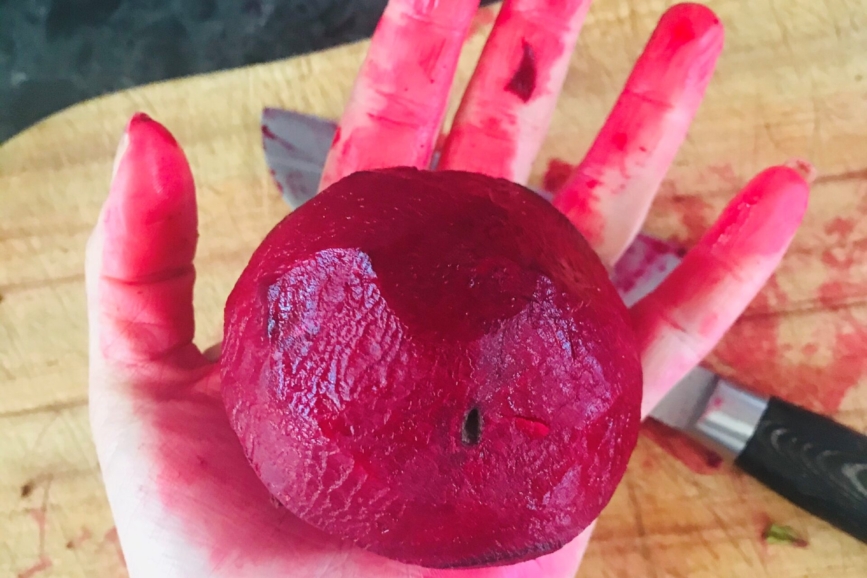
After chopping up some beetroot this morning, my hands were a beautiful shade of pink, which reminded me of the potency of pigments and phytonutrients. Anything that stains your hands has got to be good for you right?! Think beetroot, berries, dragonfruit, turmeric, etc… 😉
These phytonutrients (also called secondary metabolites) are so powerful. In fact, there’s really nothing ‘secondary’ about them!! One of the many classes of secondary metabolites is the polyphenol family, found in a range of colourful fruits and veggies, herbs, spices, as well as tea, coffee, nuts, olives and cacao (just to name a few).
Fascinatingly, 90% of these polyphenols are NOT absorbed intact like previously believed. After they reach the colon, they interact with microbes, where the microbes use them as food source, then they liberate the smaller compound that IS able to be absorbed!
It’s a delicious double whammy – a win for your gut bugs and a win for your cells. So very clever.
And while we’re on the topic of gut health and happy bugs, for all those with diverticulosis, nuts and seeds should be back on the menu! Diverticulosis is extremely common, and this is a question I get asked all the time. Unlike previously thought, these foods do NOT get stuck in the colon and are actually protective against the development of acute diverticulitis. Why? Because they’re rich in fibre.
In fact, those who eat nuts >2 times/week will have a 20% reduced risk of acute diverticulitis; and those who eat a high fibre diet (>25g/day) will have a 41% decreased risk of acute diverticulitis*.
Staying on the topic of fibre and diverticulosis, fruit seems to be especially beneficial for those with diverticular disease, which is wonderful because increasing fruit intake is extremely doable for most. Although all fruit is great, opting for seasonal, organic and/or local fruit will confer an even greater phytonutrient advantage. It will most likely taste better too, because as we know, deliciousness is important. 😉
Bottom Line
In my view, fibre is a non-negotiable for gut health. Whilst quantity is important, it’s not where the real magic lies for the gut (quality also matters). The more diversity you can achieve, the better. This means that a fibre supplement won’t necessarily have the same benefits as eating an abundance of colourful, nourishing wholefoods.
For more information on fibre and LOTS of other useful information on how to optimise digestion, click HERE.
Until next time,
Stacey.
(For Yeppoon locals, I’ll be hosting a workshop on the 3rd July with Liz Porter from Soltree Wholefoods diving into the details of a range of medicinal herbs, foods and spices. Would LOVE to see any locals there! Click HERE for more info).
*References available on request.